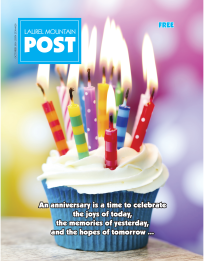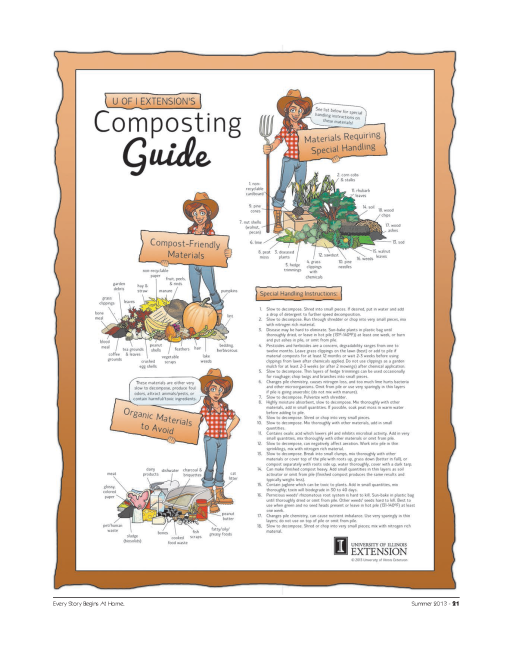 The following article appeared in the October 2014 issue of the Laurel Mountain Post and begins on page 26. Click on the issue cover to view it as published in a PDF format.
The following article appeared in the October 2014 issue of the Laurel Mountain Post and begins on page 26. Click on the issue cover to view it as published in a PDF format.
It’s ten on a Saturday morning; the orange-yellow and crimson-striped fruit hangs tantalizingly just a few inches out of reach. Leaning into the fragrant somewhat itchy vine, it’s plucked and placed with the rest of the Mr. Stripey, Cherokee Purple, German Pink and Homestead varieties of tomatoes … one hundred pounds off to the kitchen. This batch is destined for quart jars of crushed tomatoes.
In the house Glenn Miller, Benny Goodman and Gene Krupa are playing on the stereo — greats from the past, a perfect accompaniment for a day disconnected from being too connected. On the stove sits the black and grey-specked enameled processing pot, just a little too big for the burner it rests on. Two eight-quart stock pots, bowls, knives, glass jars, and lids are all strategically placed waiting their turn. As water boils and tomatoes are peeled, quartered, crushed and boiled, we dance a little, reminisce a lot, and remark how wonderful the hard, hot work is.
It’s eight in the evening, and the last seven jars now rest with the others, cooling on the counter. The tell-tale metallic ‘klink-pops’ can be heard down the hall. The kitchen is humid and hot from the long boils for each batch, and the countertops are full of garden-fresh goodness to be enjoyed all winter long.
Today many people can for the fun of it, but when my grandmother was a girl it was essential to survive the winter. She often spoke of times when they would use the outdoor kitchen to dehydrate peas and other vegetables. Pressure canners were not as reliable or safe as today. If you wanted it later, you had to can it, dry it or ferment it. Meats would be smoked, cured, jerked or made into sausages for winter – some may even be canned.
We enjoy the canning and preservation of home grown produce for its unique genuine flavor. Our goal is to grow or raise unique foods such as emmer wheat, barley, millet, sorghum, heirloom toma-toes, beans, eggplants, root vegetables, chickens for eggs and meat, and eventually some baby doll south-down sheep, goats and more.
It is just within the past few generations that people get most, if not all, of their food from a retail store, many not knowing or caring where it was grown or what variety of pea or carrot it is. In fact, most produce in your store is a specific variety grown for its shelf life and appearance. This has caused many original varieties of produce and breeds of livestock to almost completely disappear. Sadly many people today have never experienced some of the delightful flavors that long ago regional varieties and breeds had.
Modern food science has come a long way. On average, the ingredients in a typical meal on an American table have traveled an average of one thousand five hundred miles to get there. Early on, that can of crushed tomatoes would be filled with brownish liquid — not the brilliant red you expect today. The flavor of canned peaches today only varies by the amount of fructose sweeteners in it. Time, money and science give you perfect color and texture, but muted flavor. You can get fresh vegetables and fruits from all climates any time of year now. Before modern transportation methods, much of the produce you see in winter coming from Chile like grapes, strawberries, and plums were missing from the markets until next year. Now, the produce from South America or other countries is actually picked green, and later exposed to toxic ethylene gas to trigger ripening.
Today, however, there is a new resurgence in knowing your food. The farm to table movement is everywhere these days. Numerous farmers markets are springing up everywhere, benefitting local farmers, gardeners, and the host municipality, as well as eager shoppers. They offer opportunities to try long-forgotten varieties, artisan cheeses, wild flora such as mushrooms, and expertly crafted smoked meats or sausage as well.
During the great depression, home vegetable gardens were encouraged to help people provide food for their families and to instill a sense of confidence that one’s efforts could yield a reward. Later the victory garden or war garden helped the country feed itself and our troops abroad.
Relatives of ours remarked on our raised bed kitchen garden, inspiring them to build one of their own. Having sampled some of our home canned goods such as pickles, salsa and jams, they started experimenting on their own. At a recent family gathering they remarked that when they make something, it is often exclaimed: “we can CAN that!” This year they’ve made barbecue sauce, salsas, pizza sauce, apple sauce, pear sauce and fruit butters: all this from their parents’ little orchard and a small twelve by ten-foot plot of ground tucked beside their own patio and hot tub.
Here at Fairview Farm, we have 35 acres under cultivation — this year its corn. While the corn hasn’t been harvested yet, the calculated yield is 4,375 bushels or 122.5 tons. From our garden we have harvested 350 to 400 pounds of tomatoes, 14 pounds of raspberries, 10 pounds of carrots, 45 pounds of potatoes (first try at these), 70 to 80 pounds of cucumbers, 50 pounds of peppers, 20 pounds of onions, 40 quarts of snap peas, 40 quarts of green beans, and 2 bushels of apples and pears (from our neighbor’s orchard). We are in the process of developing our new elderberry and black currant patches, as well as continuing to fend off deer from our new fledgling orchard. Additionally, we are preparing to rebuild fencing for our pastures in order to add livestock.
We hope to grow, thresh and mill to flour our own wheat, rye, and other grains. Sorghum is another plant we wish to try. Its grain is high in protein, and the stalks –when pressed – yield a sweet, dark m-lasses. You need just a few tens of square feet to grow grains, and sorghum makes a great hedge-type wall. Chickens will be our first reintroduction of livestock to the farm, followed by sheep and goats. Cattle may not be an option as pasture and hayfield yield may not support more than a few of them.
You don’t need vast acres to enjoy home grown or raised food: resources are every-where to help you. Dirt doesn’t hurt, green growing things are good stress reducers, and if you’re adventurous, chickens can be raised for eggs and meat right in your back yard. Goats are good for milk and cheese, and if you’re daring, a free lawn mower guaranteed — no pushing required.
While driving or walking if you’ve ever seen an old orchard with fruit on the ground, try to find the owner and ask if you can pick the trees. They can only say yes or no, but I’m sure not having to rake and dispose of rotten apples or pears would be an encouragement to say yes. Use the rewards to make jellies, jams, apple sauce. The yield can be frozen or dehydrated into chips. Let your imagination and palate be your guide.
Realistically, you don’t need to preserve for survival today. You can, however, contribute to your own well-being and save a few pennies. You can savor your own creations, grown by you or from a fresh air market. That special variety of tomato that you can’t get anywhere else awaits you.
America’s farming history is still young. Unlike Europe where farming practices were necessitated by lack of space for many centuries, here if your land went bust you picked up and moved west. The many superb regional cuisines of Europe are a result of using everything you grew in your diet: not just that delicious emmer wheat, but the barley, mustard greens, and legumes you used for rotation to keep the soil rich and vibrant for the emmer wheat.
If you are truly looking for new flavors, search out the farmers who are growing a diverse array of heirloom crops — or better yet, start your own garden or reinvent it to offer more than salsa ingredients.
Go grow it!
# # # # #
A complete online guide to canning and preserving can be found at: www.freshpreserving.com






